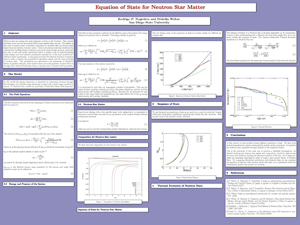 |
||||||||
 |
 |
 |
 |
 |
| Structure and Thermal Evolution of Neutron Stars | ||
|
Neutron stars are among the most enigmatic objects
in the
Universe. They possess the mass of our sun but are several
billion times smaller than it. The matter in the cores of
neutron stars is therefore compressed to densities that are
several times higher than the density of atomic nuclei. Under
such extreme physical conditions the conventional building
blocks of matter as we know them (atoms, protons, electrons)
give way to new and widely unexplored states of matter, such
as superconducting quark matter and novel particle condensates
searched for in the most powerful terrestrial collider
experiments. In this paper we study the thermal evolution of
neutron stars in order to explore the properties of ultradense
matter and the inner workings of neutron stars. The
calculations are performed in the framework of Einstein's
theory of general relativity, since neutron stars curve the
geometry of space-time so strongly that classical Newtonian
theory of gravity fails to describe their properties.
| ||
|
|
||
| • Other Abstracts • | ||
